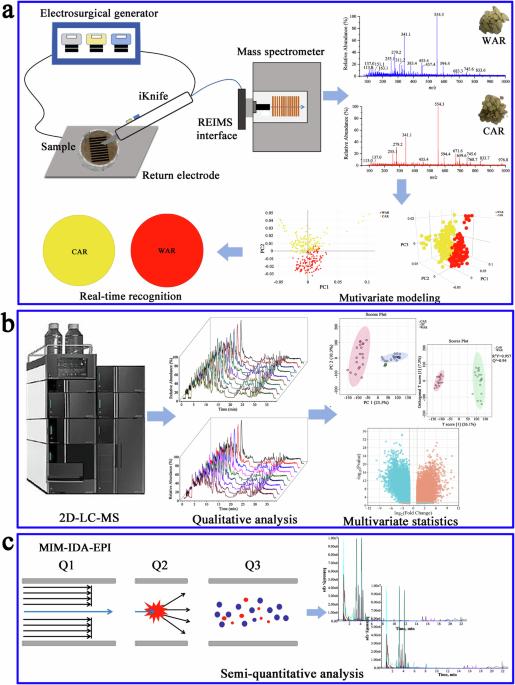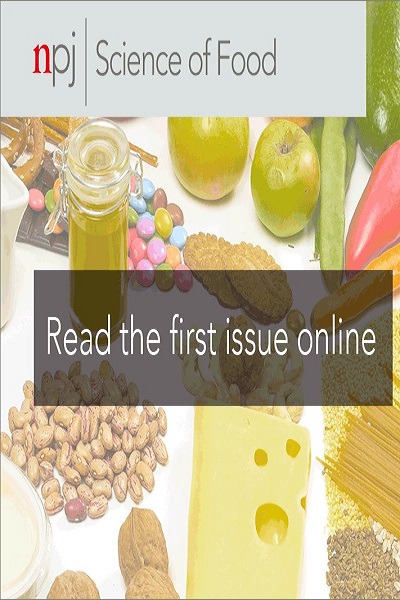基于 REIMS 结合二维 LC-MS 的野生和栽培黄芪鉴定策略
IF 6.3
1区 农林科学
Q1 FOOD SCIENCE & TECHNOLOGY
引用次数: 0
摘要
建立了一种基于快速蒸发离子化质谱(REIMS)和二维液相色谱质谱(2DLC-MS)相结合的快速、实时方法,用于鉴定野生黄芪(WAR)和栽培黄芪(CAR)。样品在环境离子化条件下进行分析,无需进行耗时的样品制备。WAR 和 CAR 的表型数据被用于建立实时识别模型。随后,基于 2DLC-MS 对这两个物种中的化合物进行了全面表征,并通过多元统计分析筛选出 45 种不同的化合物。建立了基于超高效液相色谱/四极杆线性离子阱质谱(UHPLC-QTRAP-MS)的 45 种不同化合物的半定量方法。结果表明,大多数化合物在 WAR 中的相对含量高于 CAR。综上所述,该方法在中药 "枳实 "和 "枳壳 "的鉴别中表现出了优异的性能,为中药分析鉴定领域提供了参考。本文章由计算机程序翻译,如有差异,请以英文原文为准。

Identification strategy of wild and cultivated Astragali Radix based on REIMS combined with two-dimensional LC-MS
A rapid and real-time method was established based on the combination of rapid evaporative ionization mass spectrometry (REIMS) and two-dimensional liquid chromatography mass spectrometry (2DLC-MS) for identification of wild Astragali Radix (WAR) and cultivated AR (CAR). The samples were analyzed under ambient ionization without time-consuming sample preparation. The phenotypic data of WAR and CAR were used to develop a real-time recognition model. Subsequently, the compounds in these two species were comprehensively characterized based on 2DLC-MS, and 45 different compounds were screened out by multivariate statistical analysis. A semi-quantitative method for 45 different compounds was established based on ultrahigh-performance liquid chromatography/quadrupole-linear ion trap mass spectrometry (UHPLC-QTRAP-MS). The results showed that the relative content of most compounds in WAR was higher than in CAR. In summary, the method has demonstrated remarkable performance in distinguishing between WAR and CAR, providing a reference in the field of traditional Chinese medicine (TCM) analysis and identification.
求助全文
通过发布文献求助,成功后即可免费获取论文全文。
去求助
来源期刊

NPJ Science of Food
FOOD SCIENCE & TECHNOLOGY-
CiteScore
7.50
自引率
1.60%
发文量
53
期刊介绍:
npj Science of Food is an online-only and open access journal publishes high-quality, high-impact papers related to food safety, security, integrated production, processing and packaging, the changes and interactions of food components, and the influence on health and wellness properties of food. The journal will support fundamental studies that advance the science of food beyond the classic focus on processing, thereby addressing basic inquiries around food from the public and industry. It will also support research that might result in innovation of technologies and products that are public-friendly while promoting the United Nations sustainable development goals.
 求助内容:
求助内容: 应助结果提醒方式:
应助结果提醒方式:


